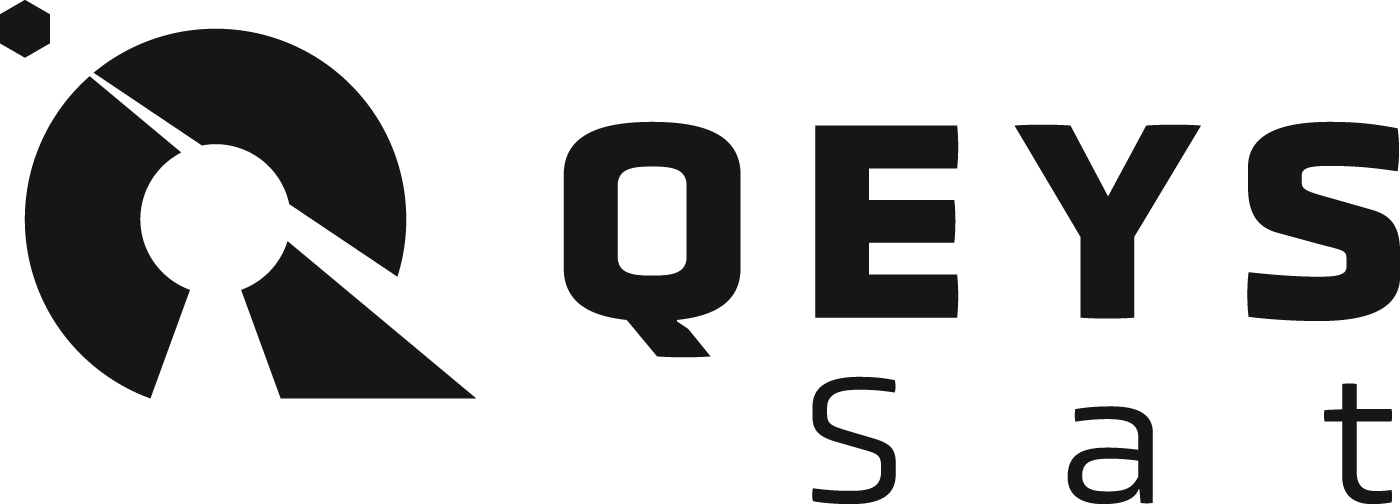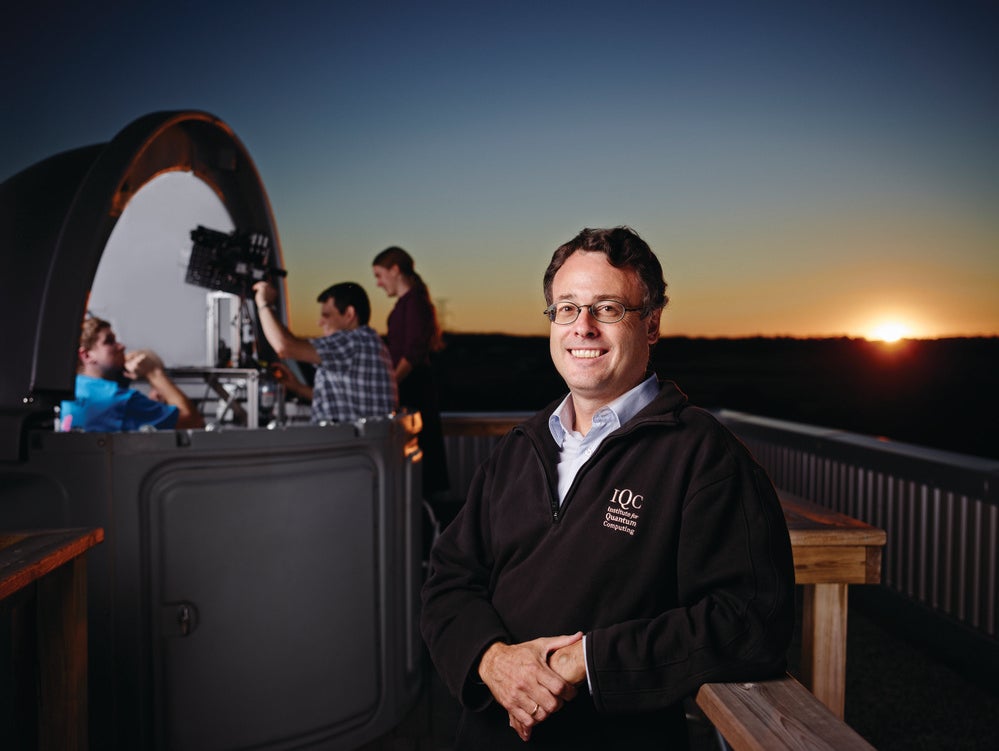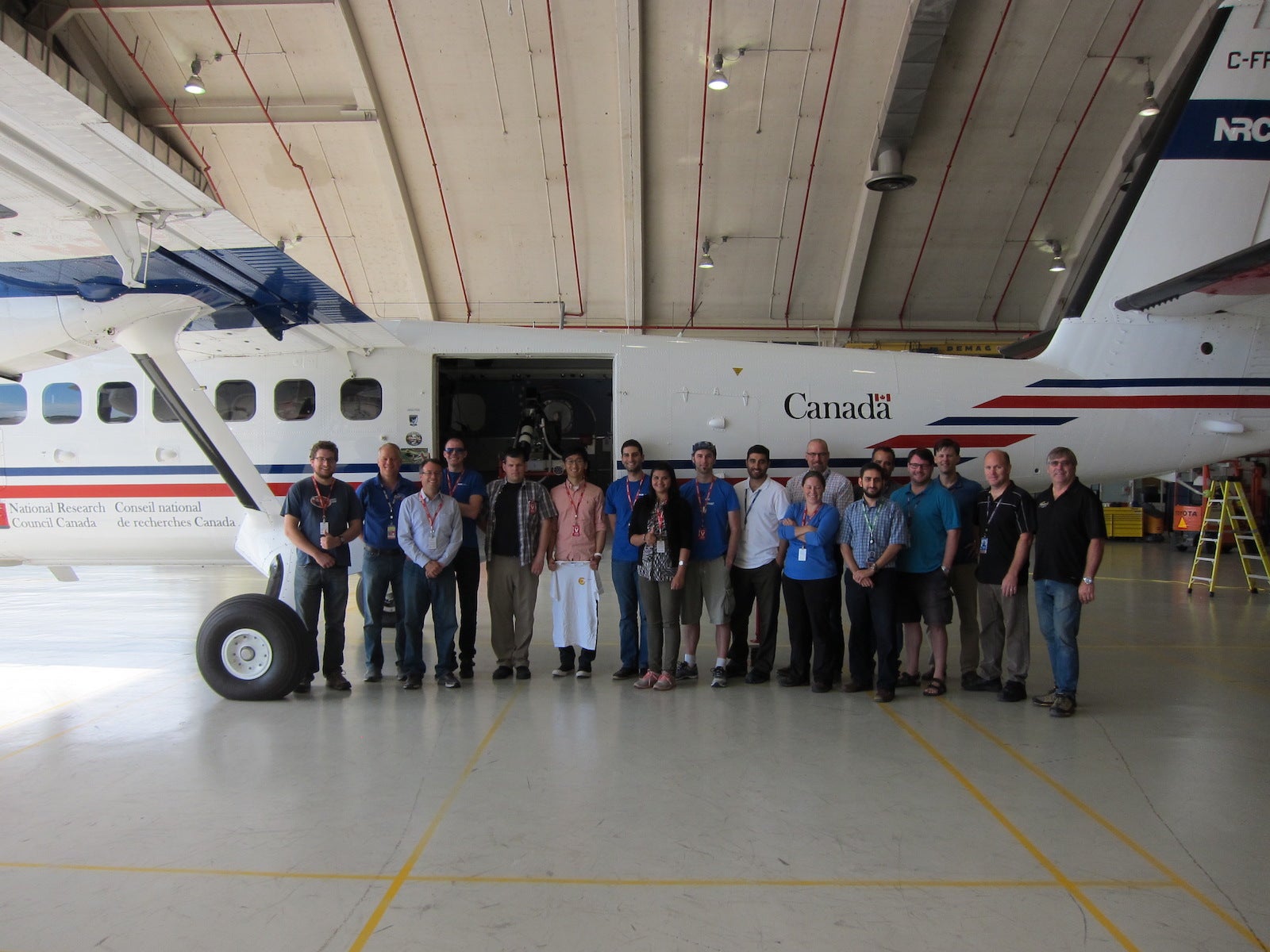
QEYSSat logo © Canadian Space Agency, 2021
Institute for Quantum Computing (IQC) researcher Thomas Jennewein is pioneering new applications for quantum technologies, in particular quantum communications networks in space. Jennewein is the Science Team Lead of the Quantum EncrYption and Science Satellite (QEYSSat) mission.
What is the QEYSSat Mission?
- The Quantum EncrYption and Science Satellite (QEYSSat) mission, funded by the Canadian Space Agency (ASC/CSA) and with an anticipated launch in 2026, will be a technology demonstration platform to study quantum links and Quantum Key Distribution for ground-to-space communication with quantum ground stations across Canada and internationally. It is a collaborative effort by the Canadian and International QEYSSat Science Teams.
- See the weather station live feed online from our quantum ground station at IQC.
- QEYSSat is a low-earth orbit (LEO) satellite with a Quantum Receiver & Transmitter, capable of exchanging quantum-encoded photons with a quantum ground station via line-of-sight free-space link. Read more in QEYSSat: a mission proposal for a quantum receiver in space.

Quantum Key Distribution Payload appears on the right, and the Optical Communication Payload is on the left. Citation: A. Scott, T. Jennewein, J. Cain, I. D'Souza, B. Higgins, D. Hudson, H. Podmore, W. Soh,"The QEYSSAT mission: on-orbit demonstration of secure optical communications network technologies," Proc. SPIE 11532, Environmental Effects on Light Propagation and Adaptive Systems III, 115320H (2020).
What is Quantum Key Distribution (QKD)?
- Quantum Key Distribution (QKD) is the generation of encryption keys between two users (typically called ‘Alice’ and ‘Bob’) whose security is based on the principles of quantum physics, such that information cannot be copied or manipulated without being noticed.
- If an eavesdropper tries to hack the quantum channel, it will disturb the photons, revealing the attack.
Why do we need QKD?
- Future advances in quantum computing could make current public-key encryption methods vulnerable. The security of QKD is not based on the difficulty of solving mathematical problems, but instead based on physical processes. An encryption key generated from QKD that is secure today will remain secure against advances in computing power (i.e. key has “Forward Security”).
- A quantum network will enable long-term data security, thus ensuring Canada’s sovereignty over the privacy of Canadians' public, private, and commercial data.
Why use satellites?
- While quantum information can be sent over a few hundred kilometers using direct optical fiber links, larger distances require other approaches. Signal transmission in fiber decreases exponentially, and conventional amplification to compensate for the lost signal does not work for quantum information. Ground-based quantum repeaters are being developed, but are unlikely to enable Canada-wide links for the foreseeable future.
- Satellites with quantum technologies onboard are critical components for a Canada-wide Quantum Network, and for building a global Quantum Internet.
QEYSSat Science Team Principal Investigator
QEYSSat Science Team Principal Investigator Thomas Jennewein is an IQC faculty member and professor in the Department of Physics and Astronomy at the University of Waterloo, and leads the Quantum Photonics Laboratory (QPL). The research of the QPL group centers on the applications of quantum photonics and quantum optics, as well as the fundamental aspects of the quantum world.

The research group is involved in the experimental design and demonstrations of quantum photonics devices suitable for communication and computing with photons, and the development of ultra-long distance quantum communication systems using terrestrial and satellite-based systems.
They are developing photonic quantum entanglement sources for various quantum protocols, and have pioneered the direct generation of three photon entangled states from cascaded parametric down conversion.

Principal Investigator Professor Thomas Jennewein with the Quantum Photonics Laboratory (QPL) team working on the Quantum Key Distribution (QKD) transmitter telescope in dome for the "Free-space QKD to a moving receiver demonstration" in 2014.
Contacts
- Research: Thomas Jennewein, Principal Investigator, Quantum Photonics Laboratory
- Media: Naomi Grosman, Communications Officer, Institute for Quantum Computing
Space quantum communication projects

The space quantum science mission concepts build upon a series of relevant projects by IQC that have been generously supported by the CSA, DRDC, FedDev Ontario and other federal and provincial organizations including Ontario Ministry of Research and Innovation (MRI), Canada Foundation for Innovation/Ministry of Economic Development and Innovation (CFI/MEDI), Natural Sciences and Engineering Research Council of Canada (NSERC), Canadian Institute For Advanced Research (CIFAR) and NSERC Collaborative Research and Training Experience (CREATE) Program.
In the fall of 2016 the team, supported by the National Research Council of Canada’s (NRC) Flight Research Laboratory, successfully demonstrated quantum key distribution (QKD) between a transmitter on the ground and a receiver payload onboard an NRC Twin Otter Airborne Research Aircraft in the Smiths Falls, Ottawa area.
The QEYSSat mission was green-lit in 2017 when the Canadian government announced federal funding for quantum technologies in space. The IQC team has been working with partners in industry and academia to advance the QEYSSat microsatellite mission through a series of technical studies funded initially by Defense Research and Development Canada (DRDC) and subsequently by the Canadian Space Agency (CSA). In 2017, the CSA named Thomas Jennewein as the QEYSSat Science Team Lead and awarded a science support contract for the QEYSSat mission. Honeywell Aerospace/COM DEV was selected to design and implement Phases B-E of the mission. Read more in Airborne demonstration of a quantum key distribution receiver payload.
QEYSSAT and QKD videos
Related news
A concept for a Canada-wide quantum internet
Researchers have published a white paper outlining a future mission opportunity to establish a step towards a Canada-wide quantum internet.
